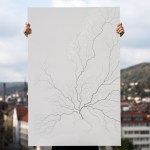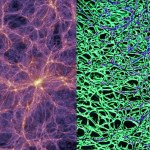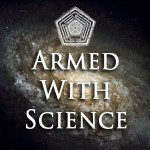Networks
Roads to Rome
All roads really read to Rome
moovel lab makes funky maps,
go play
Mining the Astronomical Literature - yes, just ADS not the Asteroids, yet.
Shamelessly cribbed from a thread on the fb Astronomers group
In defence of string theory - rather good post by Matt Strassler
Claim that founding node of networks can be efficiently localized by sparse sampling
Don't Confuse Technology With College Teaching - from the Chronicle
Kepler 11: A Six-Planet Sonata from Alex Parker on Vimeo.
Mushrooms and their mycelium are quiet allies that are essential for our healthy existence. They are enigmatic, have a sense of humor, and socially as well as spiritually, bond together all that admire them. They have much to teach us.
-Paul Stamets
If the ego is not regularly and repeatedly dissolved in the unbounded hyperspace of the Transcendent Other, there will always be slow drift away from the sense of self a part of nature's larger whole.
-Terrence McKenna
A few weeks ago, I was sitting at my kitchen table, having coffee, when I suddenly noticed a new development in my…
My friend John Ohab is hosting a new DoD webcast called "Armed With Science." Sure, it has an over-the-top logo reminiscent of the Syfy Channel (I like to intone "ARMED WITH SCIENCE" with the same cadence as "PIGS IN SPACE!"), but the show turns out to be really well-done and interesting. Each episode is a half-hour interview with a researchers in a scientific field relevant to the military: sometimes that means SONAR or geopositioning, but they also take on general science topics like Brain Awareness Week at the National Museum of Health and Medicine. It's a nice mix of topics, and it's…
SEEDmagazine.com interviews Carl Bergstrom, whose eigenfactor project uses citation databases to map networks of information sharing within science:
We find papers to read by following citation trails. If you have an eigenfactor of 1.5, it means 1.5% of the time, a researcher following citation trails is actually trying to get an article from your journal. . . How do you make the right connections, right? How do you make the critical connections to move thought forward? If you can solve a problem like that, or even just make a little contribution to it, it really accelerates science in a…
Today Bora, Abel, and I visited Duke's Sanford Institute on Public Policy for the second year in a row to discuss the coverage of science, health, and policy. We chatted with a group of undergraduates about the evolution of science blogs, the emergence of blogging networks, the role of science blogs vs the MSM, and where open-access fits in. Our beloved scibling Isis even made a guest appearance via gchat!
We had a lot of fun and special thanks to GenomeBoy for inviting us to explore ideas with his terrific class! The other 'Beacons of the Bloggerati' had cameras, so photo to come. …
Colored Petri Nets
The big step in Petri nets - the one that really takes them from a theoretical toy to a
serious tool used by protocol developers - is the extension to colored Petri nets (CPNs). Calling them "colored" is a bit of a misnomer; the original idea was to assign colors to tokens, and allow color-based expressions on the elements of the net. But study of analysis models quickly showed
that you could go much further than that without losing the basic analyzability properties
that are so valuable. In the full development of CPNs, you can associate essentially arbitrary
collections…
There's one variant of Petri nets, called counted Petri nets, which I'm fond of for personal reasons. As Petri net variants go, it's a sort of sloppy but simple one, but as I said, I'm fond of it.
As a warning, there's a bit of a diatribe beneath the fold, as I explain why I know about this obscure, strange Petri net variant.
My first project in grad school involved building a simulator for a network protocol specification language called Estelle. Estelle is, as I like to describe it, a formal specification language with absolutely no useful formal qualities.
The problem with Estelle is…



